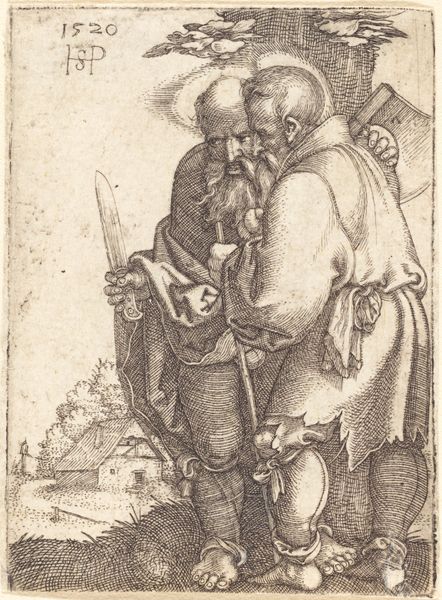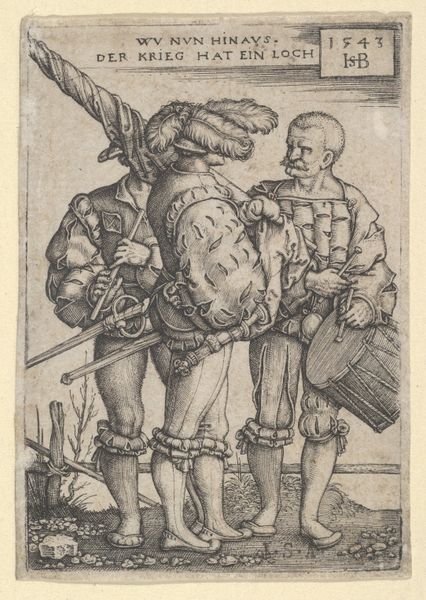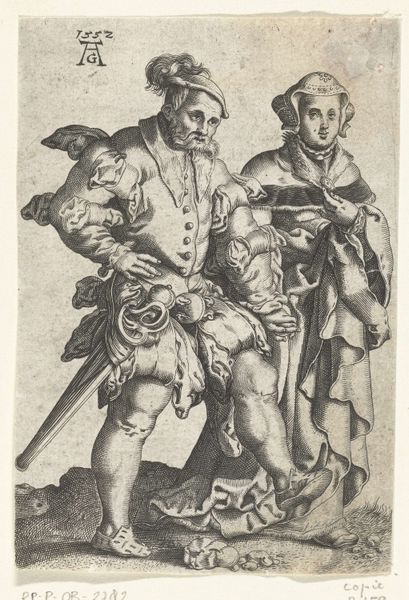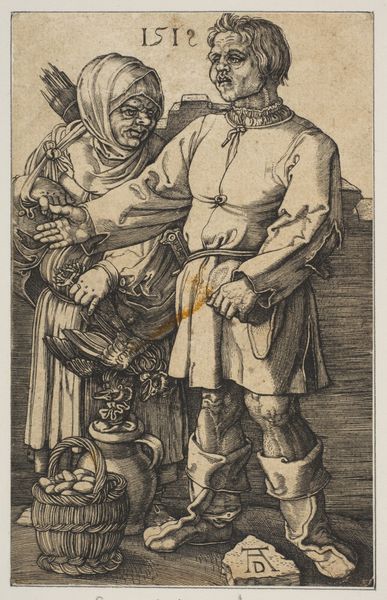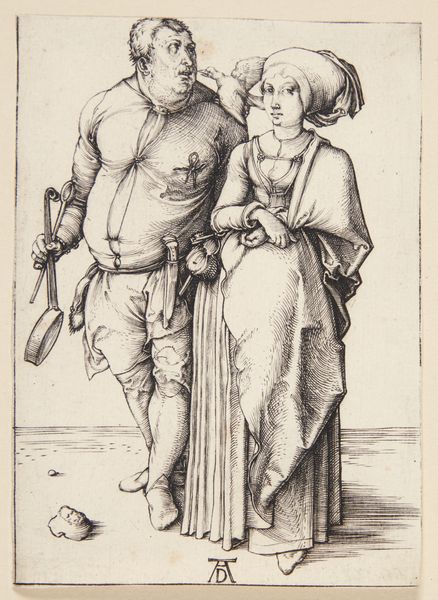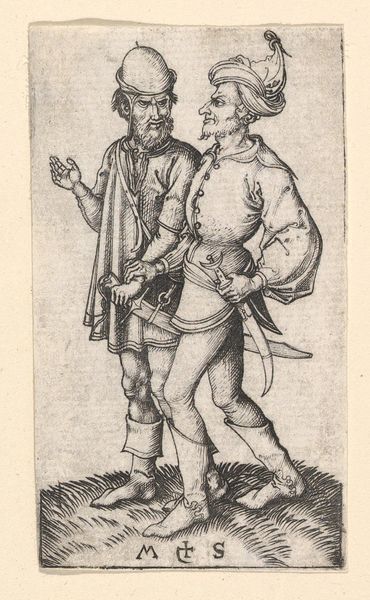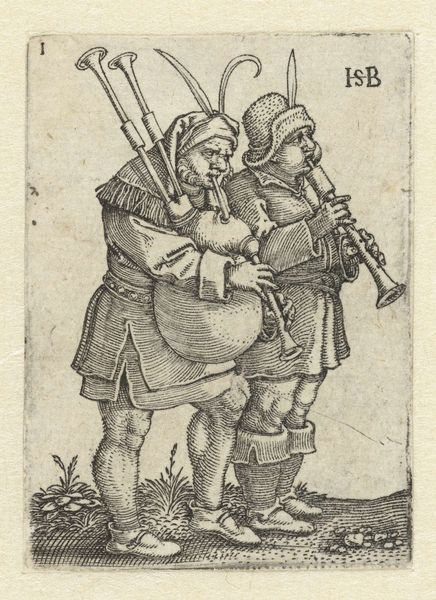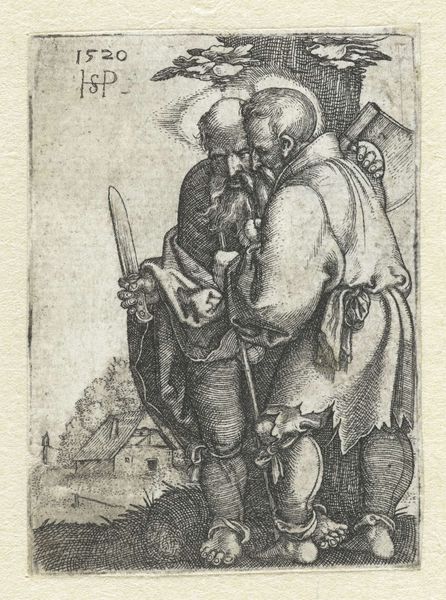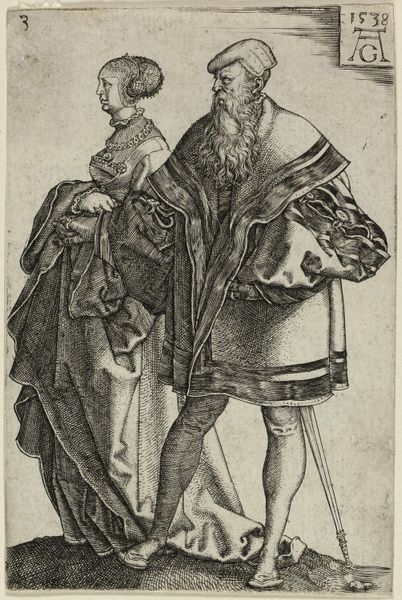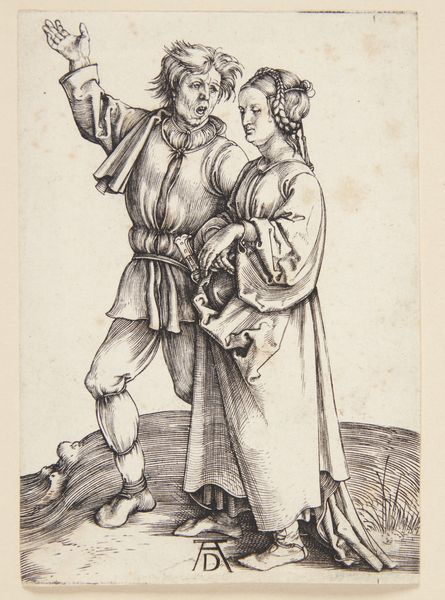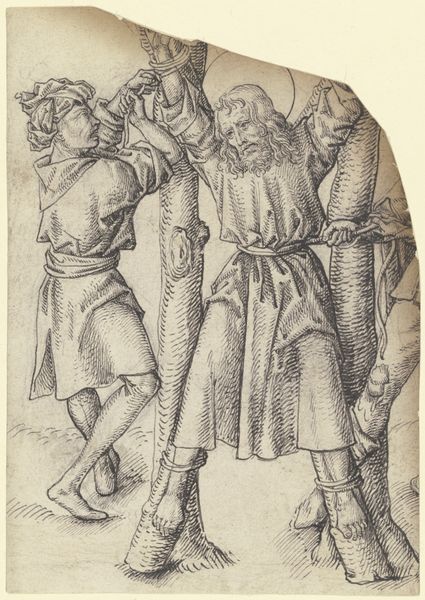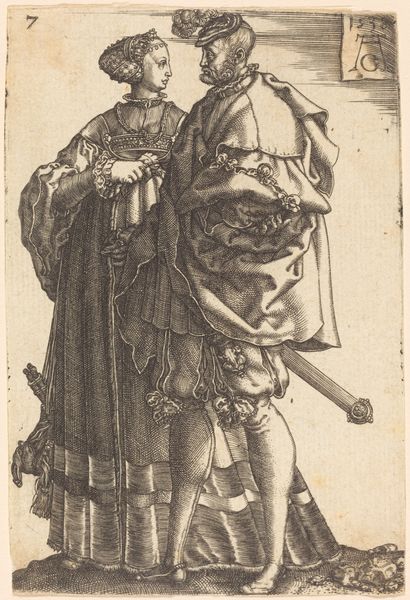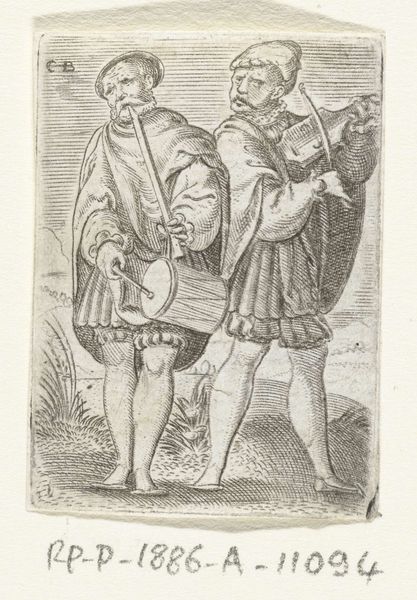
drawing, print, paper, engraving
#
portrait
#
drawing
#
medieval
# print
#
figuration
#
paper
#
genre-painting
#
northern-renaissance
#
engraving
Dimensions: 84 × 48 mm (sheet trimmed within platemark)
Copyright: Public Domain
Editor: This is "Two Moors in Conversation," an engraving by Martin Schongauer. I’m struck by the contrast in their expressions and attire – one seems rather stern, the other almost flamboyant. What's your take on this, considering the historical context? Curator: It’s essential to recognize that Schongauer, a Northern Renaissance artist, was working in a society where images of "Moors," or North Africans, were often filtered through the lens of European colonialism and prejudice. The title itself reveals a power dynamic, doesn't it? It frames the narrative, implying that these figures, likely men of color, are defined by their perceived "otherness." Editor: So, even a seemingly simple portrayal carries these weighty implications? Curator: Precisely. How are we, as modern viewers, implicated in the continued circulation of such imagery? The men are clearly of different status perhaps? Note the swords they bear – one is more ornate. What assumptions might contemporary audiences have made based on that detail alone? Remember, race is a social construct, and representations like these helped solidify those constructions. What does this piece tell us about European views of the “Other” during the Renaissance? Editor: It makes you think about the artist’s intentions and how they reflect broader societal biases. I guess I had looked at it as just an interesting study of two different characters, but now I understand it's not that simple. Curator: It rarely is. It's crucial to ask: whose voices are amplified and whose are silenced within this image? What contemporary theories on identity and representation could illuminate our understanding of Schongauer's work? Thinking through intersectional lenses helps reveal the complexities inherent in art historical analysis. Editor: It gives a whole new level of meaning to the idea of looking closely, not just at the art itself but at everything *around* the art. Thanks, this really gave me a lot to consider. Curator: Indeed. Examining historical artworks like Schongauer's through the lens of contemporary critical theory allows us to challenge traditional narratives and foster a more nuanced understanding of art’s role in shaping social consciousness. It's about acknowledging the power dynamics inherent in representation and actively engaging in a critical dialogue with the past.
Comments
No comments
Be the first to comment and join the conversation on the ultimate creative platform.
